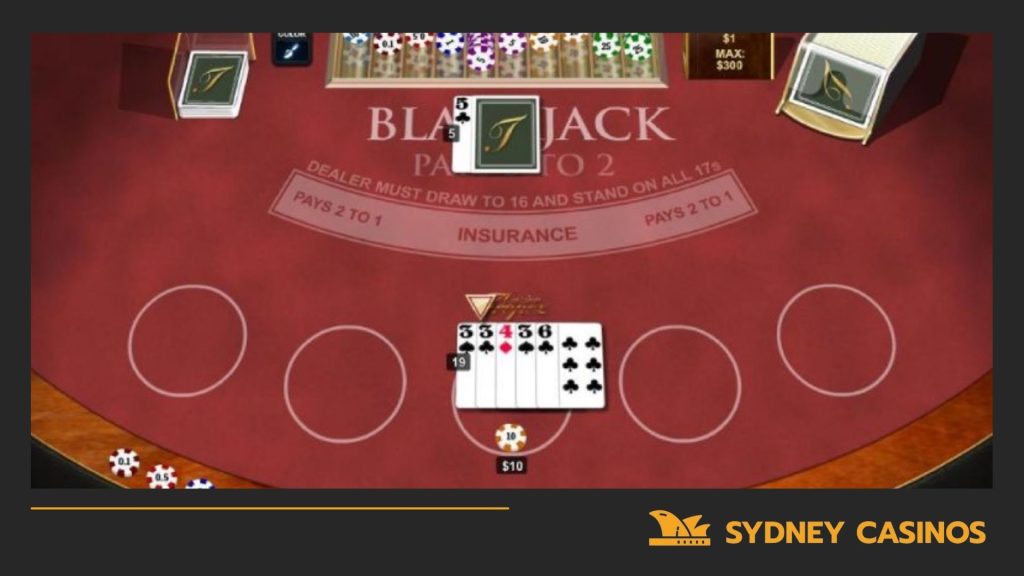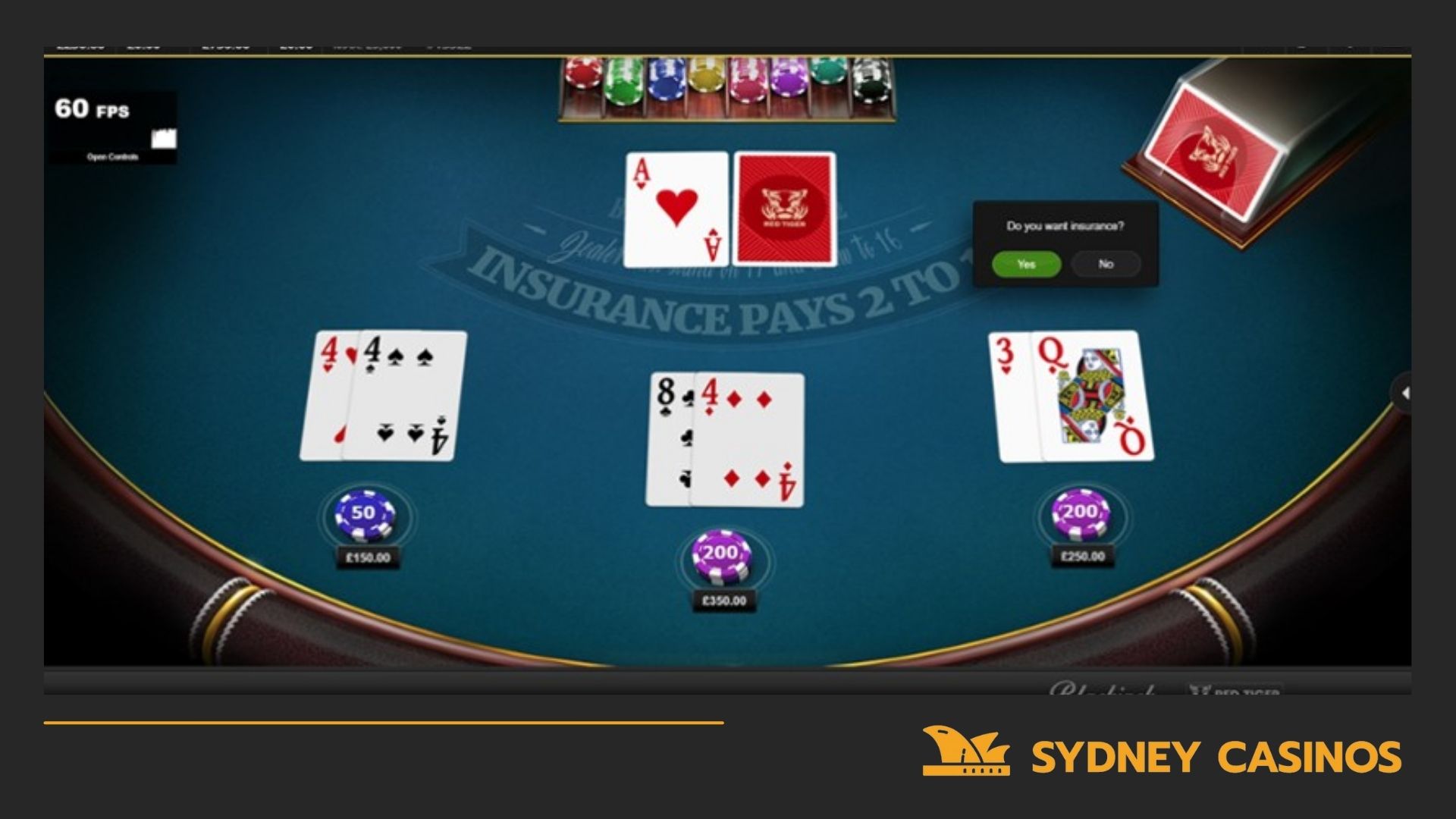Explore our full blackjack card game review to learn the ins and outs of the game, understand the rules and winning strategies.
Blackjack Target
Blackjack is a popular card game in which casino visitors aim to beat the dealer by scoring a combination close to 21. Only by beating the dealer will the player win the bet. Players determine the value of their hand by counting the number of points on their cards:
- From 2 to 10 – the number indicated on the card (e.g. 2) brings two points);
- The jack, queen, king cards have a value of 10 points;
- An ace is one or eleven points (the player is given a choice);
- An ace and a 10, jack, queen or king equals 21 points and is called a blackjack.
Blackjack Game
There are many variations in the rules of blackjack, also different numbers of decks. The most common game is dealt from a 6- or 8-deck “shoe” (plastic card dispenser). Single or double deck gameplay still exists, but not in all casinos. Next, let’s look at the most common variation of blackjack, which is played with 6 decks. The basic overview of a blackjack round consists of 6 parts:
Player Buys Chips
Before you can play at the table, you need chips. These can be exchanged for money at the blackjack table. Once you put the money on the cloth, the dealer will spread it out on the table so that the cameras can clearly record it, then the pit boss will come and check the amount. The croupier will count out denominations of chips equal to the amount they were bought for and push them towards you. The casino visitor can now dispose of the chips and place bets.
The Player Makes a Bet
At the start of a round, the first thing you do is place a bet in the betting circle. On the far right or left side of the table there will be a small sign telling you what the betting limits are. The maximum and minimum bets are different in all casinos.
The Croupier Deals the Cards to the Customers
After you place your bet, the dealer deals one face-up card clockwise to each person at the table, and then one face-down card to himself. He then deals one more card face up. Each player has two cards face up and one face down in front of him.
The Player Decides How to Play the Hand
The dealer will start with the person sitting on his left side (“first base”) and wait for that person to play his hand. To do this, the player must add up the value of the cards to get a total value between 4 and 21. The first two cards that fall out are a ten and an ace, which is a blackjack. You will be paid 3 to 2 immediately, with no play during the round, unless the dealer also has a blackjack. If the dealer happens to have a blackjack, the visitor wins nothing, but does not lose the original bet either. If both you and the dealer have no blackjack, your croupier will point to each player in succession and wait for you to decide how you want to play your hand. When it’s “first base” turn again, you will have to make your decision by signalling your hand accordingly. Dealers will not respond to your verbal instructions, as the cameras also need to see and record your decision.
There are 5 ways to play a hand:
- Stop – the first cards that were dealt by the courier you are satisfied with, you can stop and the dealer will move on. Signal – wave your hand or simply extend your open palm over the table.
- Hit – if more cards are needed, the dealer will deal you one card at a time until the total is over 21. Signal – touch the felt with your fingers.
- Double Bet – if a player has good value cards but needs more, they can double their original bet and the dealer will deal another card. Signal – re-bet your original bet, to the left of your original bet and the dealer will give you an extra card, turned sideways, to indicate that you can’t take any more cards.
- Split – if you are dealt a pair, you may place a second bet. The dealer will split the two cards so that each is the first card in the two new hands. You are allowed to split a hand of King and Jack as they have the same value, although they are not a pair. The signal is to make a second bet equal to the first. Then show the “peace sign” to indicate that you want to split, not double the bet.
- Surrender – if you don’t like the cards, you can discard them in exchange for a refund of half of your original bet. Signal – draw a line across the table, behind your bet. Just in case, always say the word “surrender” out loud to your dealer and then signal to the cameras.
Dealer Plays a Hand

There are many ways to play a hand, but the result depends entirely on the face value of the dealer’s open card. Therefore, the best option is to use a basic strategy. It is based on what the dealer shows and what cards the player has.
Basic strategy is the mathematically optimal way to play for each combination of the player’s hand and the dealer’s open card. If the dealer has good cards – 7, 8, 9, 10 or an ace, the player should keep taking cards until the total reaches 17 or more. If the dealer has a bad open card (4, 5, 6) the visitor should ask for cards until the total is 12 or more. The strategy here is that the player should not draw additional cards if there is even a minimal chance of going bankrupt. The purpose of this bad hand is to allow the dealer to collect and raise 21 points. If the dealer’s open card is a fair, 2 or 3, the casino visitor’s total cards must not exceed 13.
With a soft hand, the strategy is to keep hitting until the total reaches at least 18. Thus, with an ace and a six (7 or 17) the player would not stop at 17, but would hit.
Basic doubling strategy: if the visitor’s point total is 11, he can double his bet. If he has 10 points, doubling the bet is only possible if the dealer does not have a 10 or an Ace. The presence of cards with a face value of 9 allows the casino visitor to double the bet, but only when the dealer has cards with a face value between 2 and 6.
We also recommend reading the article about Aussie Pokies and Jackpot Slot Machines – a Real Opportunity to Win Good Money
Disbursements
Any player whose hand is higher than the dealer’s (you cannot exceed 21 points) wins the round (unless they are out). All winning combinations are paid at a 1 to 1 ratio, if you bet one chip, you win 1. If a visitor has a 21 point hand (blackjack), they get paid at a 3 to 2 ratio.

